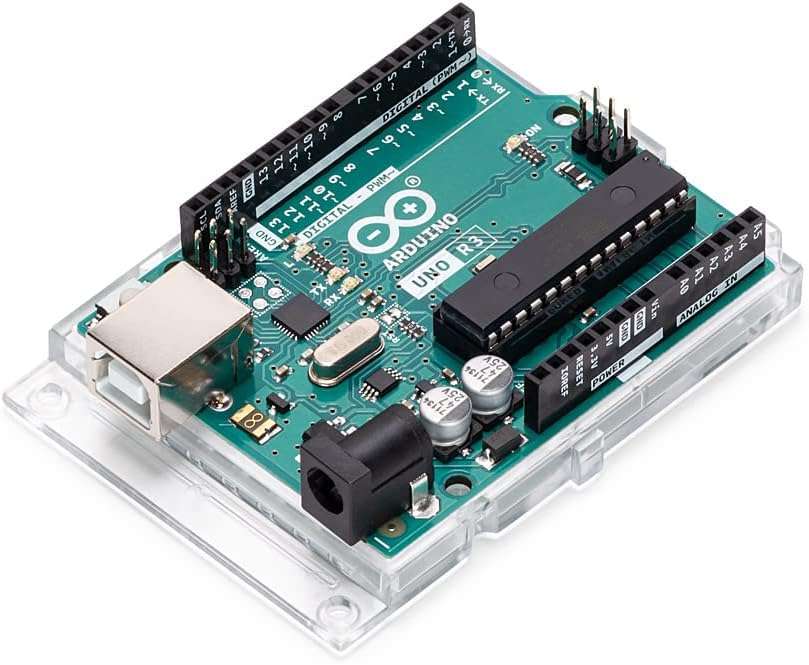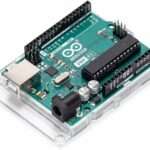-
Table of Contents
Exploring Arduino and Raspberry Pi: Unveiling the Ultimate DIY Project Champion.
Arduino and Raspberry Pi are two popular platforms used in DIY projects. Both offer unique features and capabilities that make them suitable for various applications. In this article, we will explore the strengths and weaknesses of Arduino and Raspberry Pi, aiming to determine which one reigns supreme in the world of DIY projects.
Explore Arduino and Raspberry Pi: Which Reigns Supreme in DIY Projects? Find out more at https://thundernews.org/j90n/.
The Pros and Cons of Using Arduino in DIY Projects
When it comes to DIY projects, the possibilities are endless. From building your own smart home to creating a robot companion, the world of do-it-yourself electronics is full of excitement and innovation. Two popular platforms that have captured the attention of makers and tinkerers alike are Arduino and Raspberry Pi. Both offer unique features and capabilities, but which one reigns supreme in the world of DIY projects? In this article, we will explore the pros and cons of using Arduino in DIY projects.
One of the biggest advantages of Arduino is its simplicity. Designed with beginners in mind, Arduino boards are easy to use and program, making them a great choice for those new to electronics. With a wide range of sensors and modules available, Arduino allows you to quickly prototype and bring your ideas to life. Whether you want to build a weather station or a home automation system, Arduino provides a user-friendly platform to get started.
Another advantage of Arduino is its versatility. With a vast community of makers and developers, there is no shortage of resources and tutorials available online. Whether you need help with coding or troubleshooting, you can find answers and support from the Arduino community. This collaborative environment fosters creativity and encourages experimentation, making Arduino an ideal choice for DIY projects.
However, Arduino does have its limitations. One of the main drawbacks is its processing power. Arduino boards are not as powerful as Raspberry Pi, which means they may struggle with more complex tasks. If you are working on a project that requires heavy computation or advanced graphics, Arduino may not be the best option. Additionally, Arduino boards are not equipped with an operating system, which limits their capabilities compared to Raspberry Pi.
Another disadvantage of Arduino is its limited connectivity options. While Arduino boards can communicate with other devices using various protocols such as I2C and SPI, they lack built-in Wi-Fi or Bluetooth capabilities. This means that if you want to connect your Arduino project to the internet or use wireless communication, you will need to rely on additional modules or shields. This can add complexity and cost to your project.
Despite these limitations, Arduino remains a popular choice for DIY projects due to its simplicity, versatility, and strong community support. Its ease of use and beginner-friendly nature make it an excellent platform for learning and prototyping. Whether you are a student, hobbyist, or professional, Arduino provides a solid foundation for exploring the world of electronics and programming.
In conclusion, Arduino offers a range of benefits for DIY projects. Its simplicity, versatility, and strong community support make it an ideal choice for beginners and experienced makers alike. While it may have limitations in terms of processing power and connectivity options, these drawbacks can often be overcome with additional modules and shields. Ultimately, the choice between Arduino and Raspberry Pi depends on the specific requirements of your project. So, grab your Arduino board, unleash your creativity, and start building your next DIY masterpiece!
Exploring the Limitations and Advantages of Raspberry Pi in DIY Projects

When it comes to DIY projects, the possibilities are endless. From building your own smart home to creating a robot companion, the world of do-it-yourself electronics is full of exciting opportunities. Two popular platforms that have gained a lot of attention in recent years are Arduino and Raspberry Pi. While both offer unique features and capabilities, in this article, we will focus on exploring the limitations and advantages of Raspberry Pi in DIY projects.
One of the key advantages of Raspberry Pi is its versatility. Unlike Arduino, which is primarily designed for microcontroller-based projects, Raspberry Pi is a full-fledged computer. This means that it can run a complete operating system, such as Linux, and handle more complex tasks. With its powerful processor and ample memory, Raspberry Pi can handle tasks that require more computational power, making it ideal for projects that involve multimedia, web browsing, or even running a small server.
Another advantage of Raspberry Pi is its connectivity options. It comes with built-in Wi-Fi and Bluetooth, allowing you to easily connect to the internet and communicate with other devices. This opens up a whole new world of possibilities for DIY projects. For example, you can create a home automation system that can be controlled remotely from your smartphone or build a weather station that uploads data to the cloud. The possibilities are truly endless.
Raspberry Pi also offers a wide range of input and output options. It has multiple USB ports, HDMI output, and even a camera interface. This means that you can easily connect various sensors, displays, and other peripherals to your Raspberry Pi, making it suitable for a wide range of projects. Whether you want to build a robot that can navigate its surroundings using ultrasonic sensors or create a digital photo frame that displays your favorite pictures, Raspberry Pi has got you covered.
However, like any platform, Raspberry Pi does have its limitations. One of the main limitations is its power consumption. Compared to Arduino, Raspberry Pi requires more power to operate, which can be a concern if you are working on a battery-powered project. Additionally, Raspberry Pi is not as beginner-friendly as Arduino. While Arduino has a simpler programming language and a more intuitive development environment, Raspberry Pi requires some knowledge of Linux and command-line interfaces. This can be a bit daunting for beginners who are just starting out with DIY electronics.
Despite these limitations, Raspberry Pi remains a powerful tool for DIY projects. Its versatility, connectivity options, and wide range of input and output capabilities make it a popular choice among makers and hobbyists. With a little bit of learning and experimentation, you can unleash the full potential of Raspberry Pi and bring your wildest DIY ideas to life.
In conclusion, while Arduino and Raspberry Pi both have their strengths and weaknesses, Raspberry Pi shines in its versatility, connectivity options, and wide range of input and output capabilities. It may have some limitations, such as higher power consumption and a steeper learning curve, but with determination and a willingness to learn, you can overcome these challenges and create amazing DIY projects with Raspberry Pi. So, go ahead, unleash your creativity, and let Raspberry Pi reign supreme in your next DIY adventure.
A Comparison of Arduino and Raspberry Pi for DIY Enthusiasts
Are you a DIY enthusiast looking to take your projects to the next level? If so, you’ve probably heard of Arduino and Raspberry Pi. These two popular platforms have revolutionized the world of DIY electronics, allowing hobbyists and professionals alike to create amazing projects. But which one is right for you? In this article, we’ll explore the similarities and differences between Arduino and Raspberry Pi, helping you decide which one reigns supreme in the world of DIY projects.
Let’s start with Arduino. Arduino is a microcontroller platform that is known for its simplicity and ease of use. It is perfect for beginners who are just starting out in the world of electronics. With Arduino, you can easily connect sensors, motors, and other components to create interactive projects. The Arduino programming language is based on C/C++, making it accessible to those with some programming experience. The Arduino community is also incredibly supportive, with countless tutorials and resources available online.
On the other hand, we have Raspberry Pi. Raspberry Pi is a single-board computer that runs a full operating system, such as Linux. It is more powerful than Arduino and can handle more complex tasks. With Raspberry Pi, you can build projects that require internet connectivity, multimedia capabilities, and even artificial intelligence. The Raspberry Pi programming language is based on Python, which is known for its simplicity and readability. Like Arduino, Raspberry Pi has a large and active community, with forums and online communities where you can seek help and share your projects.
So, which one should you choose? It ultimately depends on the nature of your project and your level of expertise. If you’re a beginner looking to dip your toes into the world of DIY electronics, Arduino is a great choice. Its simplicity and ease of use make it a perfect starting point. You can start with basic projects like blinking LEDs or controlling motors, and gradually move on to more complex projects as you gain confidence.
On the other hand, if you’re an experienced DIY enthusiast looking to take your projects to the next level, Raspberry Pi might be the better option. Its computing power and versatility open up a world of possibilities. You can build projects like home automation systems, media centers, or even robots. With Raspberry Pi, the sky’s the limit.
Of course, there’s no rule that says you have to choose one over the other. In fact, many DIY enthusiasts use both Arduino and Raspberry Pi in their projects. Arduino can be used to handle the low-level control of sensors and actuators, while Raspberry Pi can handle the higher-level tasks like data processing and communication. By combining the strengths of both platforms, you can create truly amazing projects.
In conclusion, both Arduino and Raspberry Pi have their own strengths and weaknesses. Arduino is perfect for beginners and simple projects, while Raspberry Pi offers more power and versatility. Ultimately, the choice between the two depends on your project requirements and your level of expertise. So go ahead, dive into the world of DIY electronics, and let your creativity soar!
Innovative DIY Projects: Combining Arduino and Raspberry Pi for Ultimate Creativity
Are you a DIY enthusiast looking to take your projects to the next level? If so, you’ve probably heard of Arduino and Raspberry Pi. These two platforms have revolutionized the world of do-it-yourself projects, allowing hobbyists and professionals alike to create innovative and interactive devices. But which one reigns supreme in the realm of DIY projects? Let’s explore the possibilities and find out.
Arduino, with its user-friendly interface and vast community support, has long been a favorite among DIY enthusiasts. It is a microcontroller-based platform that allows you to control various electronic components and sensors. With Arduino, you can build anything from a simple LED display to a complex home automation system. The possibilities are endless.
On the other hand, Raspberry Pi is a single-board computer that offers more processing power and versatility. It runs a full operating system, allowing you to use it as a mini-computer for various applications. With Raspberry Pi, you can create media centers, retro gaming consoles, or even robots. The flexibility of this platform is truly remarkable.
But why choose one over the other when you can combine the best of both worlds? By integrating Arduino and Raspberry Pi, you can unlock a whole new level of creativity and innovation. Imagine building a weather station that collects data using Arduino sensors and then sends it to a Raspberry Pi for analysis and visualization. The possibilities for collaboration are endless.
One of the most exciting projects that combine Arduino and Raspberry Pi is the creation of a smart home system. With Arduino, you can control individual devices such as lights, fans, and door locks. Raspberry Pi, on the other hand, can serve as the central hub, allowing you to control and monitor your entire home from a single interface. The result is a seamless and intelligent living space that responds to your every need.
Another fascinating project that combines the power of these two platforms is the development of a home security system. Arduino can be used to create sensors that detect motion, sound, or even changes in temperature. Raspberry Pi can then process this data and send alerts to your smartphone or email. With this DIY security system, you can have peace of mind knowing that your home is protected.
But it’s not just about practical applications. Arduino and Raspberry Pi also offer endless possibilities for artistic expression. You can create interactive art installations that respond to the environment or build your own musical instruments. With the right combination of sensors, actuators, and programming, you can bring your wildest creative ideas to life.
In conclusion, both Arduino and Raspberry Pi have their strengths and weaknesses. Arduino is perfect for beginners and those who prefer a simpler interface, while Raspberry Pi offers more processing power and versatility. However, when combined, these two platforms can create a synergy that takes your DIY projects to a whole new level. Whether you’re interested in practical applications or artistic expression, the possibilities are limited only by your imagination. So, why choose one when you can have both? Embrace the power of Arduino and Raspberry Pi and let your creativity soar.
Q&A
1. Which is more popular for DIY projects, Arduino or Raspberry Pi?
Both Arduino and Raspberry Pi are popular choices for DIY projects, but Raspberry Pi tends to be more widely used due to its versatility and ability to handle more complex tasks.
2. Which is better for beginners, Arduino or Raspberry Pi?
Arduino is often considered better for beginners due to its simpler programming language and ease of use. Raspberry Pi, on the other hand, requires more technical knowledge and understanding of operating systems.
3. Can Arduino and Raspberry Pi be used together in DIY projects?
Yes, Arduino and Raspberry Pi can be used together in DIY projects. Arduino can be used for controlling sensors and actuators, while Raspberry Pi can handle more advanced tasks such as data processing and communication.
4. Which is more suitable for robotics projects, Arduino or Raspberry Pi?
Both Arduino and Raspberry Pi can be used for robotics projects, but Arduino is often preferred for its real-time control capabilities and ability to interface with various sensors and actuators. Raspberry Pi, on the other hand, is better suited for tasks that require more processing power and complex algorithms.
Conclusion
In conclusion, both Arduino and Raspberry Pi have their own strengths and are widely used in DIY projects. Arduino is more suitable for simple and specific tasks, while Raspberry Pi offers more versatility and computing power. The choice between the two ultimately depends on the specific requirements and complexity of the project at hand.












